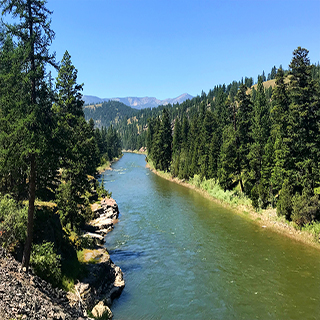Unmanned Aerial Systems

Our unmanned aerial systems (UAS) team supports our research using unmanned aerial systems to acquire imagery that is later processed with machine learning. To this end, our UAS team will coordinate data acquisition with science team leaders, transfer best practices in UAS operations and maintenance between UAA and UM, develop UAS training curriculum, and offer improvements in the efficiency, quality, and scale of environmental monitoring data collection.
Research Updates
Year One
The University of Montana’s UAS team led by Director Bart Bauer, conducted pilot training in the fire environment and collected pre-, during, and post-fire data on four live-fire experiments. All designated plots were mapped prior to burning and fire data collection points were placed inside the plots to allow for data collection during the burn. Field data consisting of fuel loads, vegetation types, and fuel moistures were collected in parallel.
Year Two
Associate Director Bart Bauer has continued to work closely with Co-I Seielstad to schedule UAS flights for the Fire Science Lab. AASO chief pilot Patrick Doyle has been the Pilot in Command for multiple flights this year using thermal, red, green, blue (RGB), and light detection and ranging (Lidar).
UM’s AASO Director, Jeremy Crowley shared with UAA UM’s Standard operating procedures for multiple UAS, preflight checklists, maintenance logs, pilot logs, and best practices for cold weather flights and battery maintenance. Grant funded interns in the AASO have actively participated in data collection, processing, and analysis in support of this research and will assist in yearly maintenance tasks for the fleet this winter. Crowley also raveled to Alaska this summer to teach a collaborative pilot licensing course with PI-Jen Schmidt specifically tailored to students and professionals with limited drone experience.



This material is based upon work supported in part by the National Science Foundation EPSCoR Cooperative Agreement OIA-2119689. Any opinions, findings, and conclusions or recommendations expressed in this material are those of the author(s) and do not necessarily reflect the views of the National Science Foundation.
